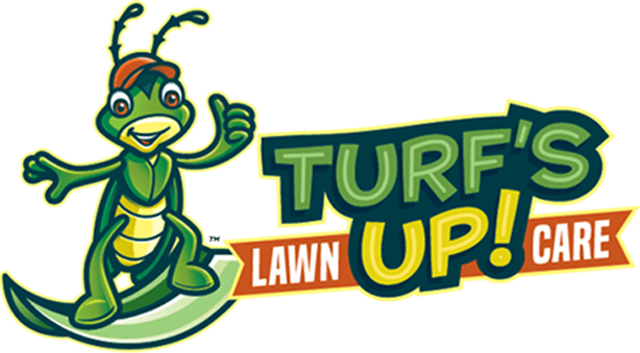In Northern Virginia, we look forward to the warmer temperatures that come with the spring and summer seasons. However, there are certain years where the winter temperatures never really drop that much during the so-called “cold season.” Though that might have been nice in terms of getting to enjoy more time outdoors, you may be wondering what it will mean for your lawn?
Chances are, you have questions. Does a warm winter mean more bugs for your lawn? Does a mild winter mean more weeds? And how is your overall lawn care program going to be impacted?
We’ll answer some of these questions and include some lawn maintenance tips to help you understand what your lawn will need to look its best.
A Warm Winter Can Mean More Lawn Weeds
Unfortunately, when winters are mild, and spring temperatures heat up earlier than normal, it can mean early germination for some of the spring weeds you’re not used to seeing until later in the season.

Not only can spring weeds make an early appearance but many winter annual weeds (which are normally suppressed by the cold weather) may have actually been growing all this time. Those winter annual weeds can also come out full force as spring temperatures really heat up.
In some cases, a lot of extra weed pressure can mean that your lawn care company will be playing a little bit of catch-up. You may need to give some grace in understanding that excess weed growth can put even some of the best companies slightly behind. But you should be able to rest assured they’re going to get caught up and get your lawn back on track.
In addition, if you’ve been working with a proactive company, your lawn should fare better, even with added weed pressure from a mild winter.
Expect Early Lawn Growth (and Mow Accordingly)
Proper mowing is an important aspect of lawn maintenance. That’s why it may help to know that following a mild winter with early spring temperatures, you can also anticipate that your lawn is going to come out of dormancy sooner than you may be accustomed to. Grass can start growing quickly and that may mean that your lawn mowing schedule will need to be adjusted.

It’s essential that these adjustments are made so that the lawn doesn’t get too long.
Not only does overgrown grass not look its best, but mowing longer grass also puts extra stress on your blades (and your turf as a whole). We always recommend that no more than one-third of the grass is cut at a time in order to avoid unnecessary stress. This can be avoided by not allowing your lawn to grow too long in the first place.
Anticipate Less (or No) Snow Mold but More Red Thread
In general, lawn fungus can be a frustrating problem to deal with. There’s no question that weather has a tremendous impact on how much (or little) lawn fungus you might see. Of course, there are different types of lawn diseases that grow in different conditions.
If it’s been a mild winter with little to no snow, one bright spot is that you’ll see less or even no snow mold come spring. Snow mold is a type of fungus that damages or kills grass after snow melts. It generally appears as gray, white, or pink spots on the lawn.
While you might see less (or no) snow mold, unfortunately, a mild winter could mean more Red Thread, which is a different type of fungal disease. Red Thread is caused by a fungus that grows when conditions are hot and wet. This disease gets its name for its appearance. It features reddish-pink, spiky threads that are typically found clinging to or extending from grass blade tips. Some homeowners have said it looks cotton candy-like in nature.
Red Thread is more likely to grow on nitrogen-deficient lawns. That means if you aren’t utilizing a regular fertilization program, you could increase your chances of seeing Red Thread on your property.
A Mild Winter Can Mean More Lawn Pest Problems
You might also be wondering, does a warm winter mean more bugs? Unfortunately, most of the time a mild winter does lead to more pest activity. Among the pests that could be posing problems, grubs are a big concern.

Grubs are the white, c-shaped pests you may have seen within the lawn. They are the larvae of beetles and they can be a major problem due to the fact that they feed on your grassroots. If measures are not taken to address them, they will continue to feed until they ultimately go into winter hibernation.
Over the winter, many of these grubs would be killed off thanks to the freezing weather. However, during a mild winter, these grubs can awaken and begin a whole new cycle of feeding before growing into adult beetles and starting the process all over again.
We feel that grubs are best addressed with proactive measures so that they don’t even get the chance to do damage, let alone spend a cozy winter hibernating in your lawn. Using a preventative grub control treatment on your lawn will prevent grubs in the first place.
In most cases, a warm winter can also lead to a sudden surge in surface-feeding insects such as chinch bugs. These pests use their mouthparts to essentially suck the life out of your grass blades. Again, when these pests do not die off in the freezing winter, they can resurge with a vengeance come early spring.
When it comes to lawn maintenance, you’ll also want to make sure that your lawn care program includes preventative measures to keep surface-feeding insects at bay.
Acknowledging the Impact of Weather on Lawn Care
At the end of the day, there is no lawn care program out there that can go head-to-head with Mother Nature and win. The truth is, the weather can be unpredictable and is wholly out of our control. There are going to be years where we experience mild winters and there’s nothing we can do to prevent that. It’s going to cause some potential problems with your lawn such as increased weed growth and insect activity—and frankly, some of that is unavoidable.
In other words, just because you hire a professional lawn care company does not mean you’ll never deal with weather-related problems again. Your lawn care company can do everything the right way but Mother Nature can still cause some issues that will need to be addressed.
The good news is, if you choose a lawn care company that takes a lot of proactive measures and is also keeping a watchful eye on your property to spot problems when they arise, then weather shouldn’t be a huge problem.
Let Turf's Up Help You with Lawn Care Tips and More
At Turf's Up, we are committed to keeping up with your lawn maintenance needs, including addressing weather’s impact. You can count on us to keep a watchful eye on how weather is going to play a role in the tasks that we are already performing. We’ll make adjustments as they are needed to our schedule and our program as a whole.

On top of that, you can also count on us to provide cultural recommendations and lawn maintenance tips that will help you understand some of the things that you might be seeing on your lawn (and why they’re happening). It’s the very reason why we write articles like this one.
Of course, this is not how all lawn care companies operate. There are plenty who would rather keep you in the dark as to what’s going on. Many of these same companies also fail to adjust their timing or services because of weather (and they’d rather you didn’t know). But you deserve to have all of your lawn care needs met, even when springtime weather arrives early.
When you put your lawn maintenance needs in the hands of Turf's Up, you can anticipate having peace of mind that your lawn will be taken care of, even as the weather causes changes. That means you can spend more time enjoying your lawn and less time worrying.
If you are ready to work with Turf's Up for your lawn care needs at your Aldie, Ashburn, or Leesburg, VA home, reach out.
Image sources: dandelions, grub




